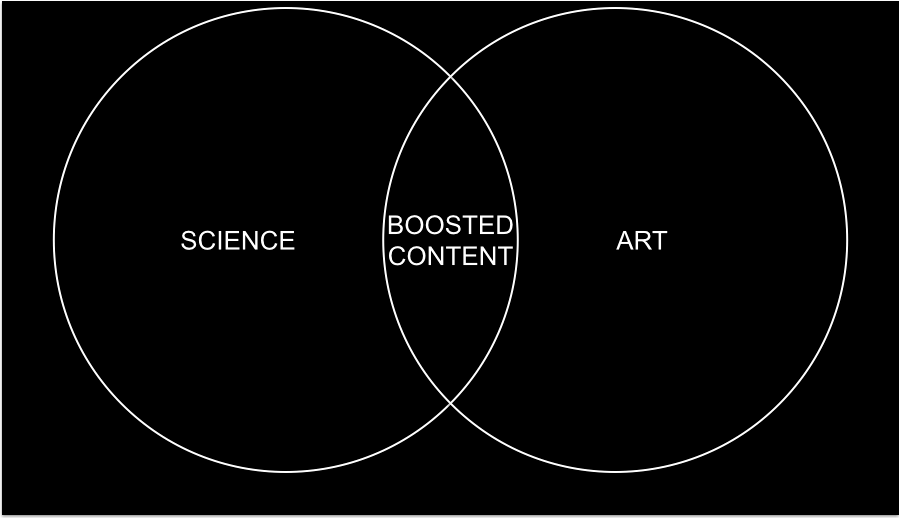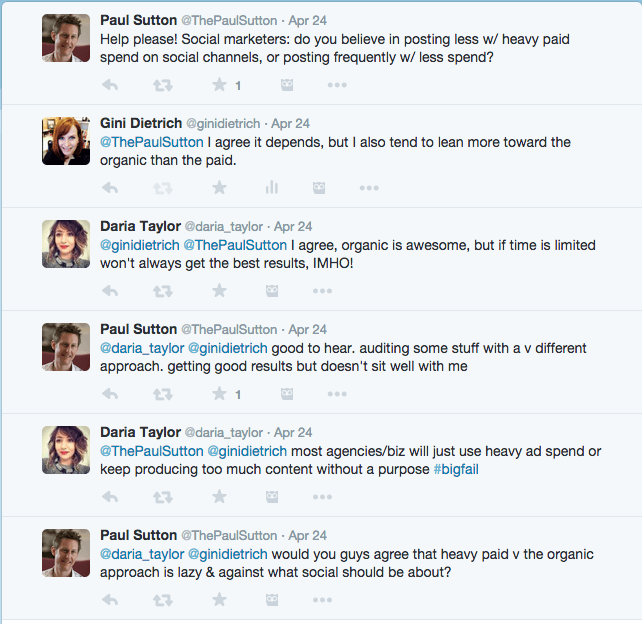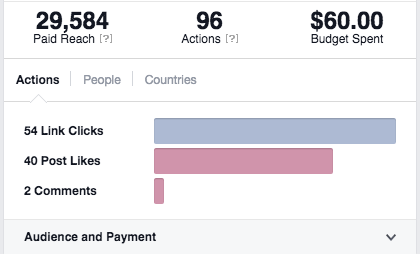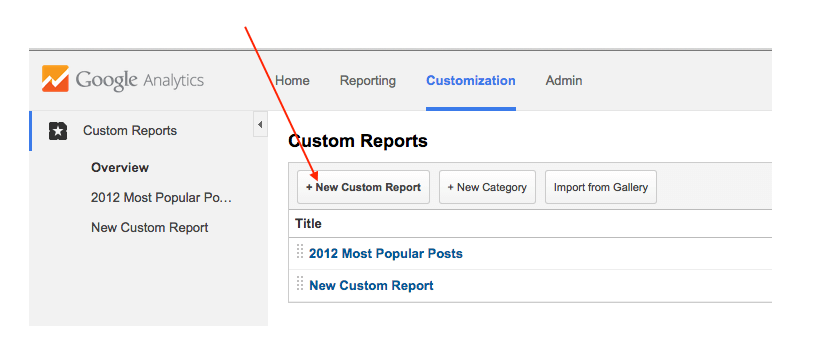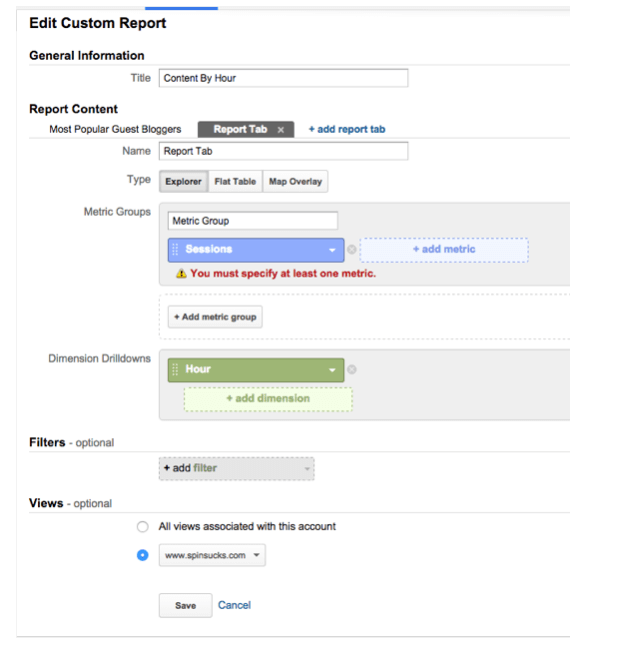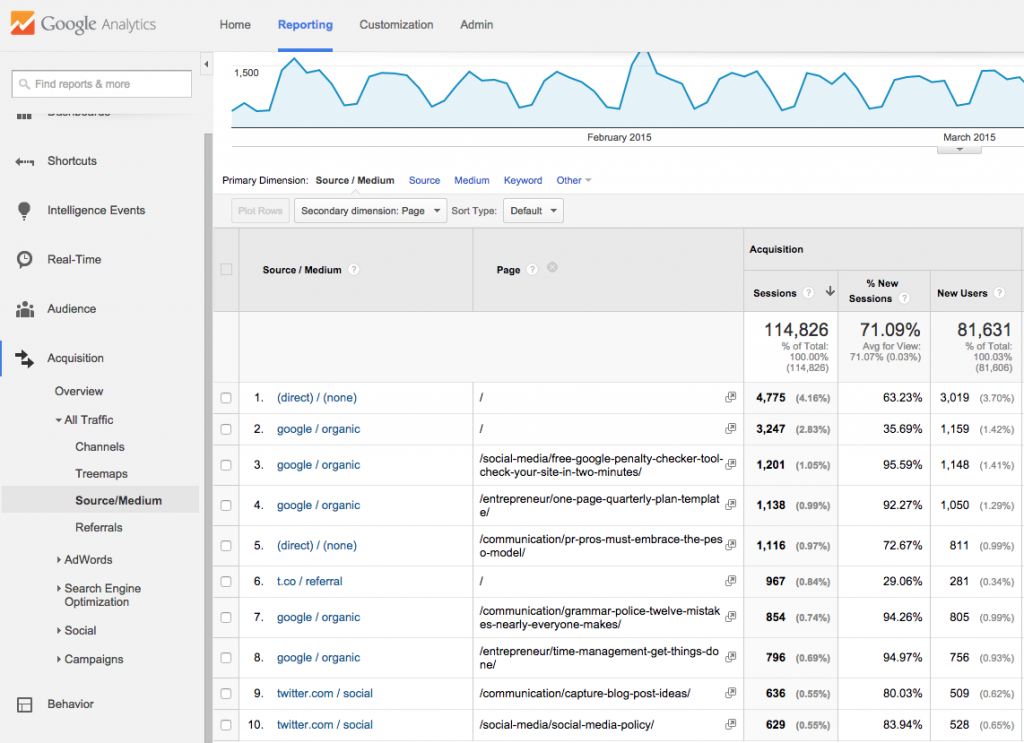Last week, Paul Sutton had a question about when to boost content.
He tweeted and said, “Do you believe in posting less w/ heavy spend on social channels, or posting frequently w/ less spend?”
The conversation went on to include Daria Taylor and we debated for a few minutes the differences between paid and organic and whether you should boost content.
I’m a big believer in organic anything—media, content, search engine optimization—but there also comes a time when throwing a few dollars at your efforts amplifies it in ways you just can’t get with elbow grease alone.
For instance, we always pay to boost content for our monthly webinar series on Facebook.
Organically, we can reach 53 people, which includes 0 comments, 15 likes, 1 share, and two link clicks.
If we pay for it, our reach is significantly more and we pay just more than $1 per link click. The goal is to get that less than $0.10, and this gives us a benchmark.
The point is that we can have 54 more people at our monthly webinars by paying for a little content boost, which is neither lazy nor against what social is about.
It’s the nature of the beast. Facebook wants to make money. You want to reach a targeted audience. You can’t do that without paying Facebook.
(After our Twitter debate, Paul created a survey. If you’d like to take it—it’s super fast—you can find it here.)
Use Google Analytics to Add Science
This is all easy because it’s a monthly webinar series that is easy to measure, based on registrations.
Which leads me to how to boost content that isn’t so specific.
A couple of weeks ago, Christopher Penn wrote a blog post on how to use Google Analytics to decide how to boost content.
Of course, Facebook tells you which content you should boost, based on how well it’s doing on its own, but I like Penn’s approach because it’s a little more scientific than, “Hey, people like this content so why not pay for it?”
In his article, he provides step-by-step instructions to set up Google Analytics to help you decide when it’s time to boost content.
I’m going to follow his advice here so you can see how it works on two different blogs.
Step-by-Step Instructions
This gets pretty granular, but it’s fairly easy, so hang on.
The first thing we need to do is figure out what the hourly traffic on average looks like for your website.
Because there isn’t a report that shows you traffic by hour of the day, you’ll have to create one.
Open up Google Analytics.
Click on Customization in the home navigation. It automatically takes you to Reporting so make sure you click on the right tab.
Now click on “New Custom Report” either where my red arrow is or right below it where it says “New Custom Report” under “2012 Most Popular Posts.”
Either one will work.
Name it “Content By Hour” or whatever you like. Then click on “Report Tab” and leave the name as is.
Metric Group will automatically show up, but you’ll need to click the box where you see Sessions and add that. I just do a search and add it that way.
The Dimension Drilldowns needs to change to Hour (use the search bar to type in Hours and find it that way) and then hit Save.
Then I go into the report, change the date range so it covers year-to-date, and look at what the data tells me.
Now comes the hard part for PR pros…the math!
See the percentages at the end of each blue bar? I want to add those until I get to 25 percent.
In this case, I only have to add four of them (which gets me to 26.74 percent) and it shows me that 10:00 is our witching hour.
(It’s also pretty cool that we’re fairly consistent throughout the work day.)
Figure Your Averages
Put 10 a.m. in the back of your mind and move on to the next step.
Go back into your regular reporting and click on the general audience overview.
Make sure the date range is still year-to-date and figure out your average visitor by day.
For us, it’s 998 visitors.
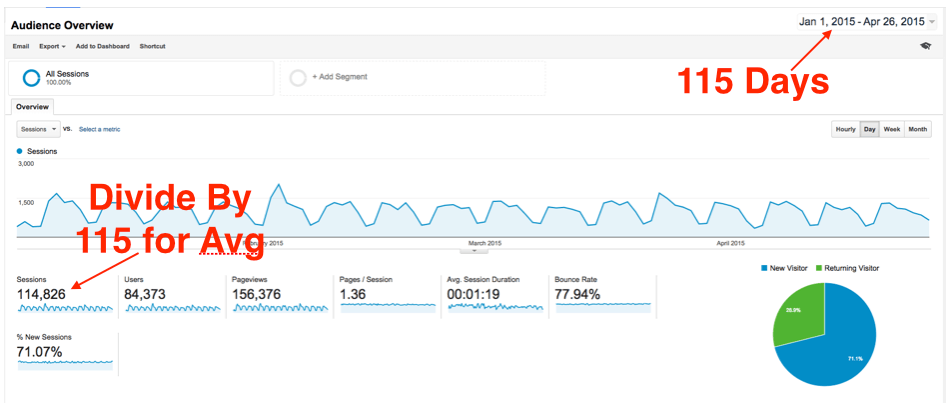 Now, I want to go back to the math part and, because I used 25 percent as my indicator above, I’ll use it here again.
Now, I want to go back to the math part and, because I used 25 percent as my indicator above, I’ll use it here again.
Twenty-five percent of average daily traffic is 250.
Now I know that if, by 10 a.m. each day, we have more than 250 visitors on a particular post, something is up.
This is where Penn suggests you boost content.
How to Boost Content
To figure out which content is blowing your numbers out of the water, change your date range to a specific day. I used this past Friday because I’m writing this at 5:00 on Monday morning so there isn’t any traffic yet.
Go to Acquisition, All Traffic, Source/Medium.
In my case, I had to add the second column—Page—so I’d know the URLs of the popular content. You can do that by clicking “Secondary Dimension” and then adding it there.
There is quite a bit of content that hits my 250 baseline so I can make a decision here if there is anything I want to boost.
If there is, I’ll boost it on Facebook or LinkedIn or test out other paid content boosts, such as on Twitter or Instagram (if it’s available to you).
You also can use the LinkedIn publishing platform to republish that particular piece of content and lead people back to your site.
So there you have it!
I can tell you that Facebook has not recommended we boost any of this content, simply because most of it is older content that has long-tail purpose.
What this does is add some science behind what our instinct tells us.
Let me know in the comments if you have questions or need help deciding next steps.
P.S. Thanks, Penn, for forcing me to do this exercise! Next time we’re together, think this will do the trick to get you to smile in a photo?
